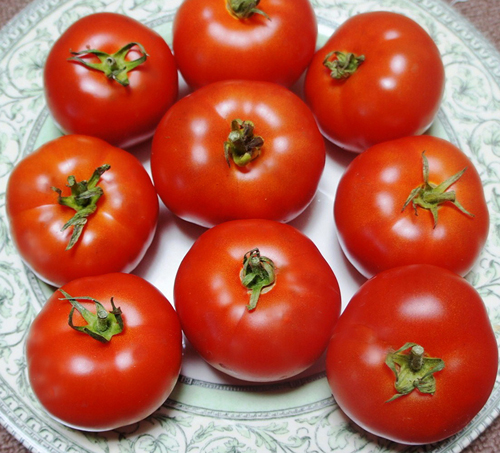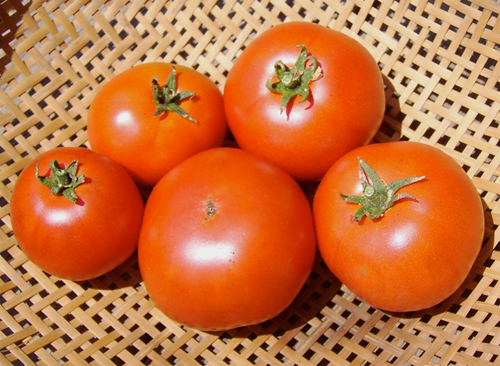Tomato variety Aurora (F1)
One of the main areas of work of NITSSA (Research Center for Seed Breeding of Agricultural Technology) is the creation of tomato hybrids with a complex of qualities that are difficult to combine in varietal crops. Among the varieties created, Aurora stands out, the main properties of which are high taste and transportability. In 2002, the novelty was entered into the State Register of Breeding Achievements of the Russian Federation with admission in all regions. Applicant and originator - Y. Panchev The variety is recommended for growing under film shelters and in the open field in garden plots, in personal and small farms. Our hero is a hybrid, so he is labeled F1.

Description
The plant is determinate, 60 - 70 cm high, in greenhouses up to 90 cm. The bush is compact, well leafy. Leaves are medium in size, of the usual type, dark green. The inflorescence is of a simple type. The formation of the first fruit cluster occurs over 6 - 7 leaves, the rest are formed after 1 - 2 leaves. During the growing season, 5 - 6 brushes are formed on the Aurora bush, each of which contains 4 - 5 ovaries. The peduncle is articulated.
The fruits are beautiful, dense, firm, rounded, with slight ribbing. Unripe tomato is light green, without a spot at the stalk. Ripe turns bright red. The skin is glossy, dense, not hard. The pulp is juicy, there are more than 4 seed nests. The taste qualities of the variety, given its belonging to hybrids and early maturity, are good, this is recorded in the State Register and confirmed by vegetable growers. Fruit weight from 90 to 120 grams.
Characteristics
- Aurora is of interest primarily due to its early maturity. The first tomatoes ripen within 79 - 82 days after germination;
- small bushes show good commercial yields. Vegetable growers confirm this, calling the plant very productive. But the official data on this indicator differ greatly. So, the State Register provides data on 3 - 5 kg per 1 square meter. But the originator promises 14 - 16 kg of tomatoes from the same area;
- ripening is amicable, for the first 2 harvests almost 60% of the total harvest is harvested;

- disease resistance is high, which is typical for hybrid varieties. The variety is well resistant to Alternaria, the tobacco mosaic virus, due to its early maturity, it manages to avoid phytophthora. But the State Register does not confirm or deny these data;
- fruits are resistant to cracking;
- high indicators of keeping quality and transportability;
- harvested tomatoes can be used universally. Tomatoes are good for salads, suitable for canning.
Agrotechnics
Aurora is grown in seedlings. Seeds are sown in early March. Transplantation into the ground is carried out when the seedlings are 50 - 55 days old. The planting density recommended by the originator is 5 - 6 plants per 1 square meter, other sources recommend planting 3 bushes on the same area. Despite its compactness, the plant needs support. Passionking can be done in moderation. For a very early harvest, it is recommended to form the plant into 1 stem. Agricultural technology is common for the culture as a whole.
After giving back an early harvest, Aurora can grow back and continue to bear fruit, due to which productivity will increase. Small farm owners are pleased with the variety that shows stable fruiting, regardless of the weather, and a friendly return of fruit. Tomato is also valued for its unpretentiousness and good disease resistance. Perhaps the only drawback is the inability to collect seeds on your own.








